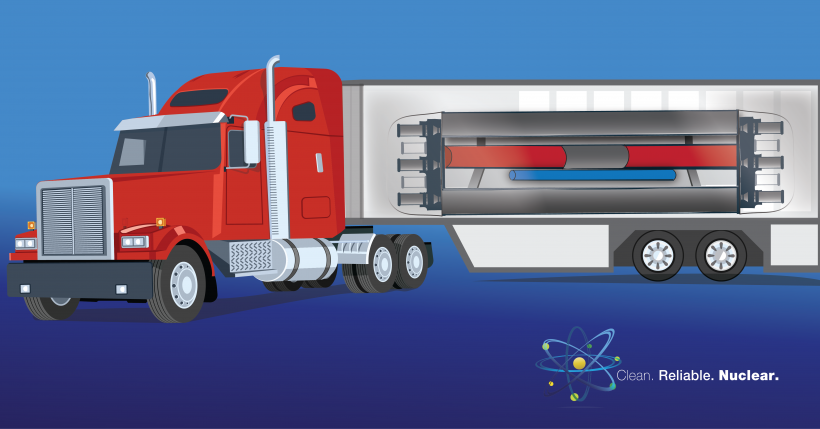
Micro-reactors are gaining attention for their simple design and their ability to be deployed for electricity production or heat for industrial use in remote locations, from commercial or residential areas to military bases. Alfredo Cortez is a recent graduate who worked with Center for Nuclear Security Science and Policy Initiatives (NSSPI) Director Dr. Sunil Chirayath to investigate the safety of these reactors.
“The micro-reactors are meant to be transportable, self-adjusting, and factory fabricated,” Cortez explained. “The small size makes the fully assembled micro-reactor transportable by either railcar, airplane, ships, or even shipping trucks.”
In his project, Cortez examined the criticality and radiation safety of one of the micro-reactor designs, the high-temperature gas-cooled reactor (HTGR) of prismatic type, by creating open-source computational models of its reactor core and storage cask.

“A nuclear micro-reactor is worth nothing if it cannot be safely transported before and after its core life, especially from a criticality safety and radiation safety perspective,” asserted Cortez. “Given the nuclear micro-reactor designs under development in the US and their planned deployment in the near term, it is imperative to analyze their safe transport and storage to prepare regulatory recommendations to the designers that facilitate licensing of micro-reactors.”
Cortez created a computational model of an HTGR-type micro-reactor core using the Monte Carlo radiation transport code, MCNP6.2. The core used tri-structural isotropic (TRISO) uranium fuel particles embedded in a prismatic graphite fuel block consisting of a combination of high-assay low-enriched uranium (HALEU) with 235U enrichments of 15% and 18%. He also developed an MCNP computational model of a spent fuel storage cask. The fuel burnup simulation of the micro-reactor core physics resulted in a desired uniform neutron flux profile, and the core used about 0.5 metric tons of uranium with a core life of seven years, generating a thermal power of 12.5 MW. Using the material composition of the spent fuel obtained from the MCNP fuel burnup simulation, he created two radiation source terms of gamma and neutrons and performed criticality safety and radiation safety analyses of a storage cask. His studies showed that the designs were indeed safe.
“Our study showed that the effective neutron multiplication factor, k-eff values were far less than the US Nuclear Regulatory Commission (USNRC) safety limit of 0.95 for both normal and flooded conditions of the dry cask storage modeled with spent fuel inside it,” he said. “The total radiation dose rates on contact for both normal and flooded condition of the storage cask with spent fuel loaded and 74 cm concrete shielding were below 10 mRem/hr.”
Cortez hopes that his study can contribute to research in the micro-reactor safety community by creating an open-source MCNP model for an HTGR micro-reactor as well as that of its spent fuel storage cask. He was grateful for the experience he gained while working with the Idaho National Laboratory researchers to conduct the micro-reactor safety research.
One of the important experiences Cortez had as a NSSPI student, which brought home the importance of his work, was when he visited nuclear fuel cycle facilities in Europe in May of 2023 as part of the International Nuclear Facilities Experience. This included multiple reactor designs and uranium enrichment facilities. NSSPI also facilitated Cortez’s participation in domestic nuclear facilities experiences to visit Oak Ridge, Sandia, and Los Alamos National Laboratories.
In May, Cortez earned his M.S. degree in nuclear engineering with a specialization in nuclear nonproliferation from Texas A&M University. Prior to joining NSSPI, Cortez received his B.S. in Nuclear Engineering from Texas A&M University. He is currently interning at Los Alamos National Laboratory and plans to continue his education as a Ph.D. candidate in the nuclear engineering department.